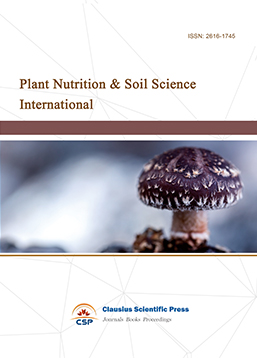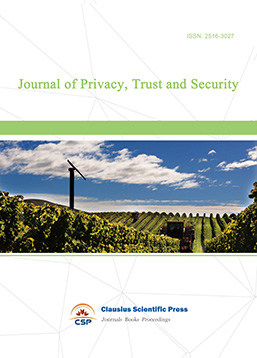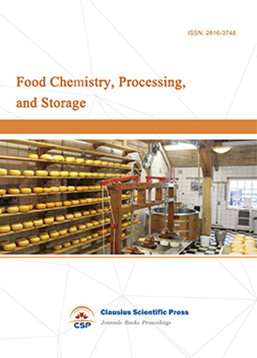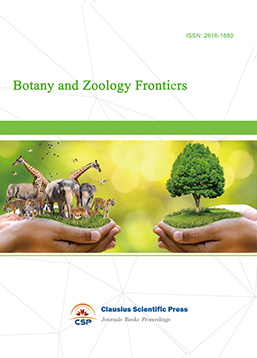Comparison of Different Media for the Quantitative Detection of Staphylococcus Aureus
DOI: 10.23977/afshn.2024.060101 | Downloads: 7 | Views: 182
Author(s)
Tao Dong 1, Chan Jiao 2, Yuanjing Qiu 1, Chao Han 1
Affiliation(s)
1 Kaifeng Product Quality Inspection and Testing Center, Kaifeng, Henan, 475000, China
2 Kaifeng University, Kaifeng, Henan, 475000, China
Corresponding Author
Tao DongABSTRACT
In accordance with the steps of the second method of GB 4789.10-2016, culture experiments were carried out on standard strains of Staphylococcus aureus, isolates from food samples using S. aureus chromogenic medium and Baird-Parker medium. There was no difference between the quantitative detection results of the two media in the concentration of S. aureus from 20 to 200 CFU/mL (P>0.05), the colonies on the Baird-Parker plate were smaller, black and without turbid band when cultured for 24 h. The characteristics of typical colonies were not obvious, and typical colonies appeared when the culture was prolonged to 48 h. The colonies appeared with typical characteristics of growth, black and turbid band; the colonies showed pinkish-purple when cultured for 18 h on the colour-developing plate, and the detection efficiency of colour-developing plate was superior to that of Baird-Parker plate. When cultured for 18 h on the chromogenic plate, the colonies were pinkish-purple, and the detection efficiency of the chromogenic plate was better than that of the Baird-Parker plate, and the incubation time could be shortened by about 24h. The quantitative detection effect of the chromogenic medium and the Baird-Parker medium on Staphylococcus aureus was comparable, but the chromogenic medium could shorten the cultivation time and had a higher efficiency, and the sensitivity and specificity of chromogenic medium for the detection of the strains preserved in the laboratory were higher than that of the Baird-Parker medium. The sensitivity and specificity of the colour-developing medium were higher than those of the Baird-Parker medium.
KEYWORDS
Culture medium; Staphylococcus aureus; quantitative detectionCITE THIS PAPER
Tao Dong, Chan Jiao, Yuanjing Qiu, Chao Han, Comparison of Different Media for the Quantitative Detection of Staphylococcus Aureus. Advances in Food Science and Human Nutrition (2024) Vol.6: 1-6. DOI: http://dx.doi.org/10.23977/afshn.2024.060101.
REFERENCES
[1] Xu Wenjuan. Several common rapid detection techniques for Staphylococcus aureus [J]. Modern Food, 2021, 20: 105-107.
[2] Dadashi M, Hajikhani B, Darban-Sarokhalil D, et al.Mupirocin resistance in Staphylococcus aureus:a systematic review and Meta-analysis[J].J Glob Antimicrob Resist, 2020, 20:238-247.
[3] Mobasherizadeh S, Shojaei H, Azadi D, et al. Molecular characterization and genotyping of methicillin-resistant Staphylococcus aureus in nasal carriage of healthy Iranian children [J]. J Med Microbiol, 2019, 68(3): 374-378.
[4] da Silva AC, Rodrigues MX, Silva NCC.Methicillin-resistant Sta phylococcus aureus in food and the prevalence in Brazil:a review[J].Braz J Microbiol, 2020, 51(1):347-356.
[5] Schneewind O, Missiakas D. Sortases, surface proteins, and their roles in Staphylococcus aureus disease and vaccine development [J].Microbiology Spectrum, 2019, 7(1):10.1128.
[6] Jenul C, Horswill A R. Regulation of Staphylococcus aureus virulence[J]. Microbiology Spectrum, 2019, 7(2):10.1128.
[7] Miller L S, Fowler V G, Shukla S K, et al. Development of a vaccine against Staphylococcus aureus invasive infections: evidence based on human immunity genetics and bacterial evasion mechanisms[J]. FEMS Microbiology Reviews, 2019, 44(1):123-153.
[8] Lakhundi S, Zhang K Y. Methicillin-resistant Staphylococcus aureus: Molecular characterisation, evolution, and epidemiology [J]. Microbiology Reviews, 2018, 31(4):e00020-e00018.
[9] Kane T L, Carothers K E, Lee S W. Virulence factor targeting of the bacterial pathogen Staphylococcus aureus for vaccine and therapeutics[J]. Drug Targets, 2018, 19(2):111-127.
[10] Macori G, Bellio A, Bianchi D M, et al. Genome-wide profiling of enterotoxigenic Staphylococcus aureus strains used for the production of naturally contaminated cheeses [J]. Genes, 2019, 11(1):33.
[11] Necidova L, Bursova S, Harutiakova D, et al.Effect of heat treatment on activity of staphylococcal enterotoxins of type A, B, and C in milk [J].J Dairy Sci, 2019, 102(5):3924-3932.
[12] Dai J, Wu S, Huang J, et al.Prevalence and characterisation of Staphylococcus aureus isolated from pasteurized milk in China [J].FrontMicrobiol. 2019, (10):641-650.
[13] YEHIA HM, ISMAIL EA, HASSAN ZK, et al. Heat resistance and presence of genes encoding staphylococcal enterotoxins evaluated by multiplex-PCR of Staphylococcus aureus isolated from pasteurised camel milk [J]. Biosci Rep, 2019, 39(11): 1-12.
[14] Meng Xiaoqin, Cui Yan, Pu Wanxia. Research on the application of chromogenic medium in the detection of Staphylococcus aureus [J]. Chinese Journal of Veterinary Medicine, 2018, 3 7(4):34~3 6.
[15] Teng Kunlun, Shi Xiaofan, Li Jianshun, et al. Evaluation of the effectiveness of rapid detection of Staphylococcus aureus using Baird-Parker containing rabbit plasma fibrinogen[J]. Chinese Journal of Health Inspection, 2018, 28(17):2089-2092, 2096.
[16] Wang Dandan, Liu Mingchang, Yang Yange, et al. Progress in rapid detection of foodborne pathogenic bacteria [J]. Food Science, 2022(003):043.
| Downloads: | 1047 |
|---|---|
| Visits: | 29689 |

 Download as PDF
Download as PDF



